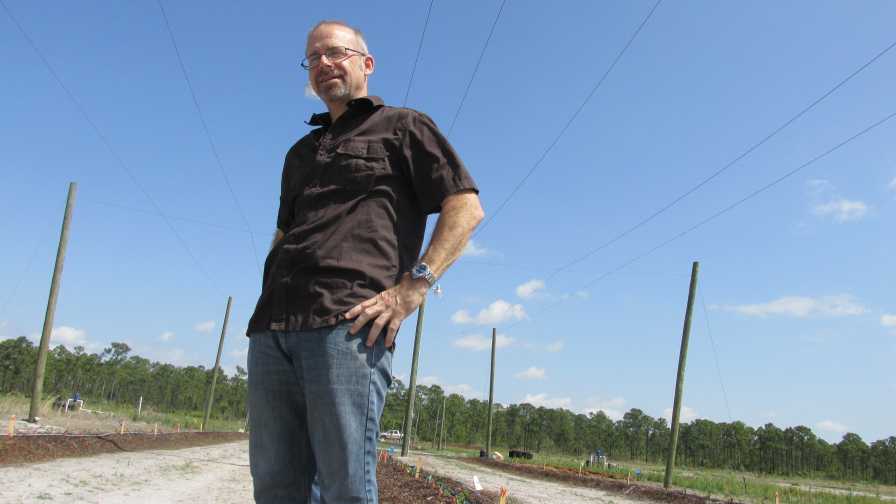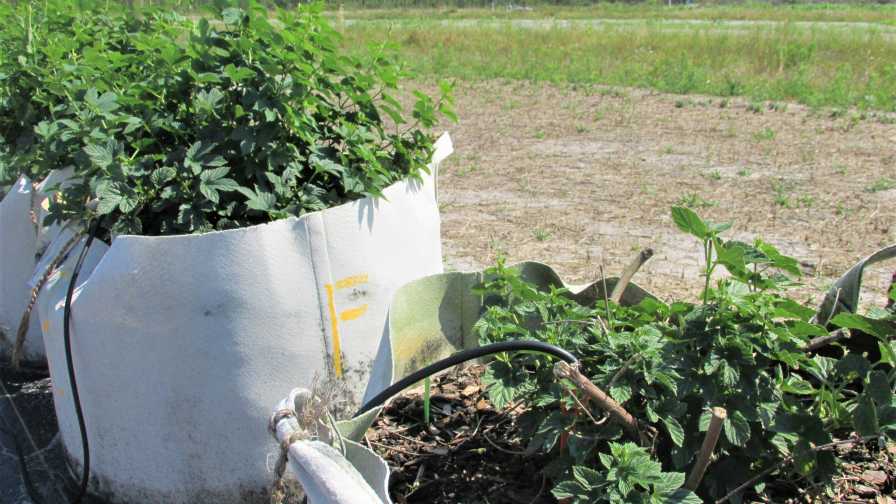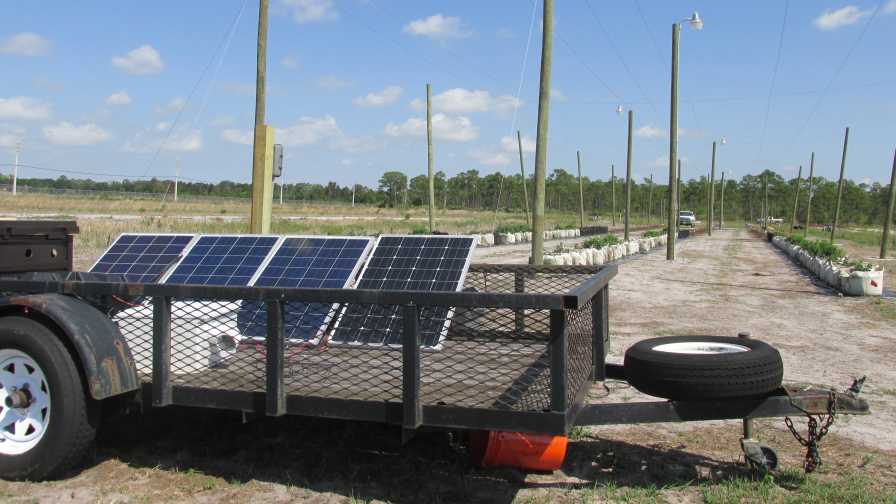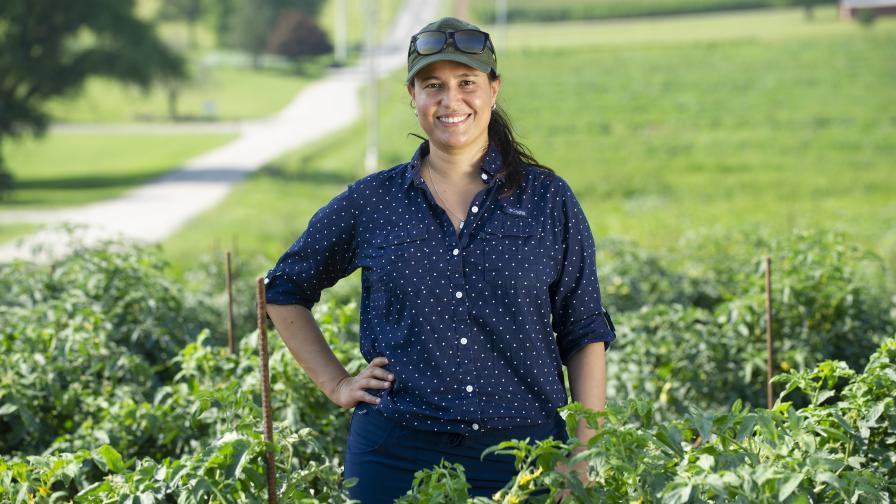USDA Reaches Milestone in Florida Hops Research

Dr. William Turechek is leading breakthrough studies on Florida hops at the USDA Hort Research Lab in Ft. Pierce. Photo by Richard M. Smith
Researcher William Turechek of the USDA Agriculture Research Service Horticulture Research Laboratory in Ft. Pierce, FL, has completed one critical step in investigating the effect of vernalization on yield and quality of hops. In his study, plants were exposed to 38⁰F for six weeks in cold storage while others were left to experience a characteristically mild Floridian winter. Plants in cold storage were recently removed and placed in the research hopyard, joining the hops left to experience a reduced dormancy period.
“There is a definite visual difference between the plants in cold storage and those left out, which is good for comparison.” Turechek says. “We hope to keep this project running longer to find out what this does to the life of the hop.”
Hops, having life spans of 25 to even 50 years, are typically grown in northern latitudes between 35th and 50th parallel where plants and growers are accustomed to experiencing lower winter season temperatures and longer growing season day lengths than available in southern environments.

Visual differences can be spotted when comparing hop cultivars that sat in cold storage for six weeks vs. selections exposed to Florida’s typical temperate climate.
Photo by Richard M. Smith
The experiment, which compares multiple hop varieties treated with photoperiod extension and cold storage, grown in-ground and fabric bags, under tall and short trellis systems, is one of the most comprehensive research projects in the Southeast U.S.
“We are looking to expand this work even more and look at some additional treatments of interest,” Turechek adds.
Last year, Turechek’s research conducted a study on the influence of photoperiod extension using supplemental lighting in their research hopyard. The lights are controlled by timers and powered by solar panels. Results showed that by lengthening the plants’ exposure to light, hop plants yielded much more growth and higher harvest weights, nearly eight times as much, than those without supplemental lighting. Many plants held over several pounds of wet cones. Hops harvested from the trial were brewed in beers from Pareidolia Brewing Company in Sebastian and Orchid Island Brewery in Vero Beach.

Alternative energy like solar is being used to help power USDA photoperiod trials on Florida hops.
Photo by Richard M. Smith
Until now, lack of research on overcoming these advantages for this crop has prevented some potential southern hop growers from taking on the challenge of production here in Florida. Growers throughout Florida have been quickly adopting and applying the new production strategies developed from this research. Farms such as Central Florida Hops in Zellwood and Riverbend Hop Farm in High Springs are hoping to see equivalent results.
Hops produced from this year’s work will be further evaluated for their brewing quality, allowing the researcher to compare alpha and beta acids, as well as essential oil profiles of the hops from these treatments. The expansion of the research hopyard will allow for larger production and more breweries along the Treasure Coast to use freshly harvested Florida-grown hops, while also generating funds that will be used to support the work.










